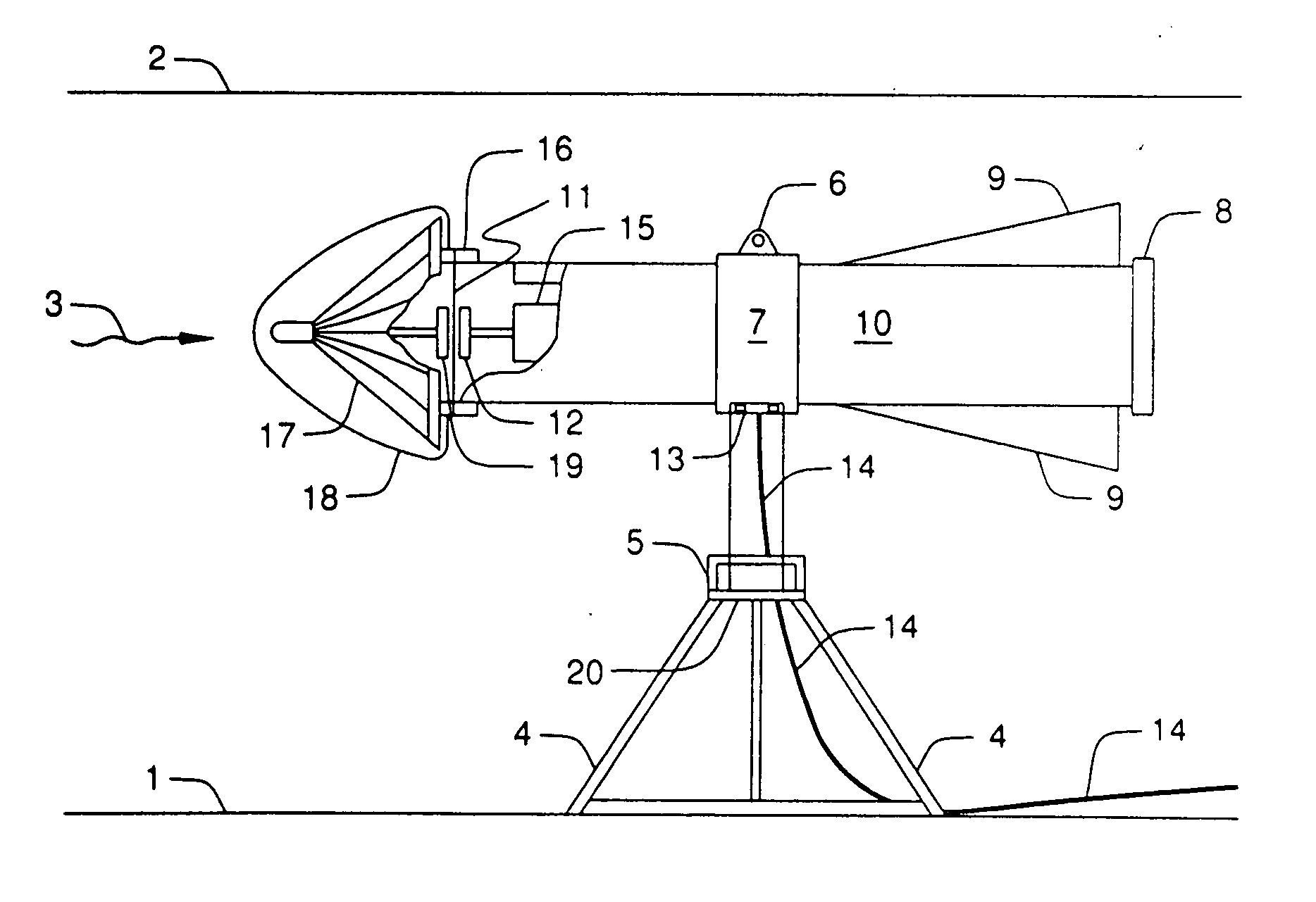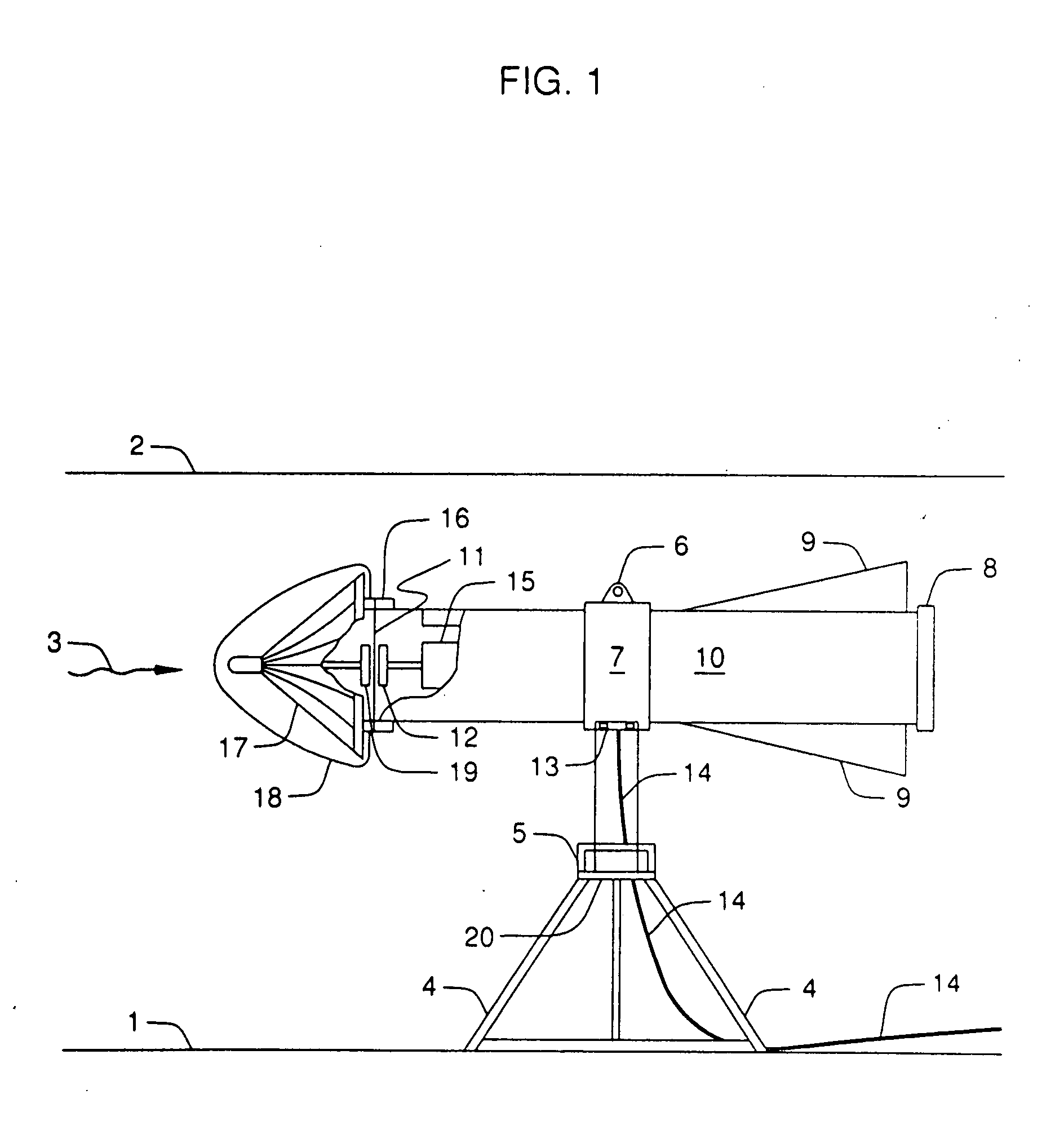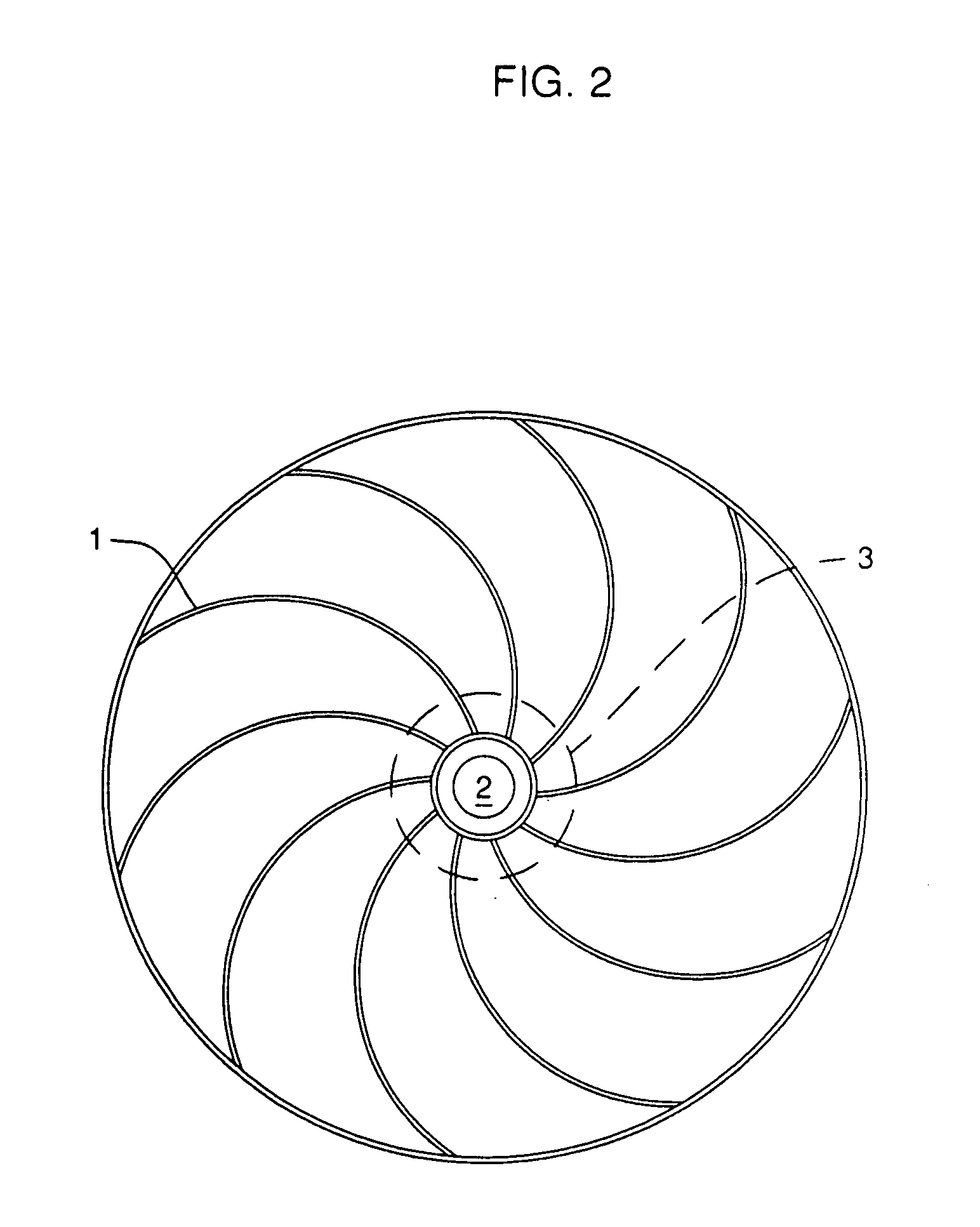Tidal/water current electrical generating system
a technology of electrical generating system and tide water, which is applied in the direction of electric generator control, machines/engines, mechanical equipment, etc., can solve the problems of structural failure, impracticality, and structural problems of propellers, and achieve the effect of reducing the strain on flexible electrical cables
- Summary
- Abstract
- Description
- Claims
- Application Information
AI Technical Summary
Benefits of technology
Problems solved by technology
Method used
Image
Examples
Embodiment Construction
[0034]FIG. 1 is an overall description of the invention. #1 in the drawing represents the river bed upon which the invention is placed. #2 depicts the surface of the body of water, below which the device is placed. #3 depicts the direction of flow of the body of water. #4 depicts the mechanical mounting of the device, which can be a pylon or a pile driven into the bed of the body of water. #5 is a thrust or other suitable bearing which allows the upper structure of the alternator / generator with the attached impeller assembly to rotate freely. This is restricted by stops to limit the amount of rotation, thereby reducing the strain on the flexible power cable leading to shore.
[0035]#6 is a launching ring to facilitate the lowering and raising of the device into and out of the water. #7 is a mounting saddle which mechanically attaches the base pedestal to the generating pod. #8 is the end cap to the waterproof housing of the generating device to allow access for maintenance when the in...
PUM
 Login to View More
Login to View More Abstract
Description
Claims
Application Information
 Login to View More
Login to View More - R&D
- Intellectual Property
- Life Sciences
- Materials
- Tech Scout
- Unparalleled Data Quality
- Higher Quality Content
- 60% Fewer Hallucinations
Browse by: Latest US Patents, China's latest patents, Technical Efficacy Thesaurus, Application Domain, Technology Topic, Popular Technical Reports.
© 2025 PatSnap. All rights reserved.Legal|Privacy policy|Modern Slavery Act Transparency Statement|Sitemap|About US| Contact US: help@patsnap.com



